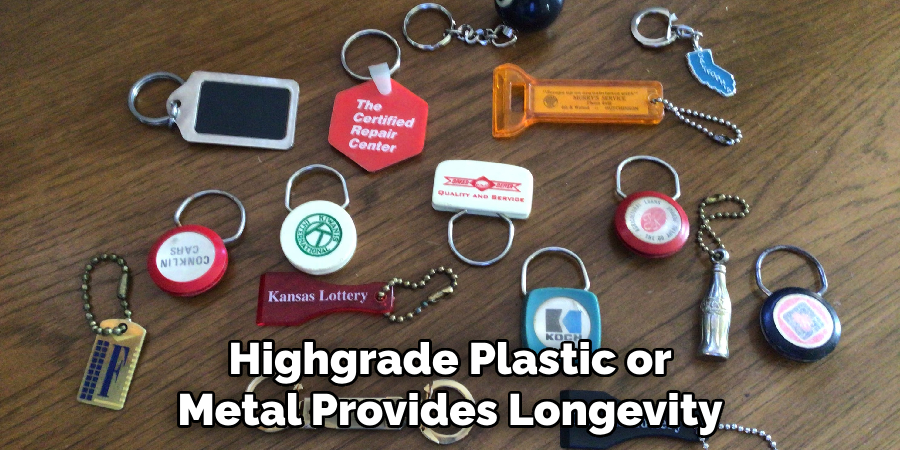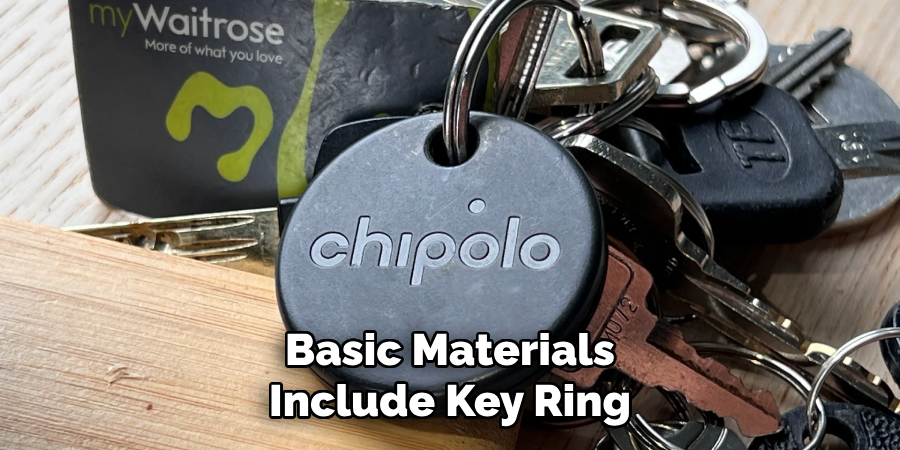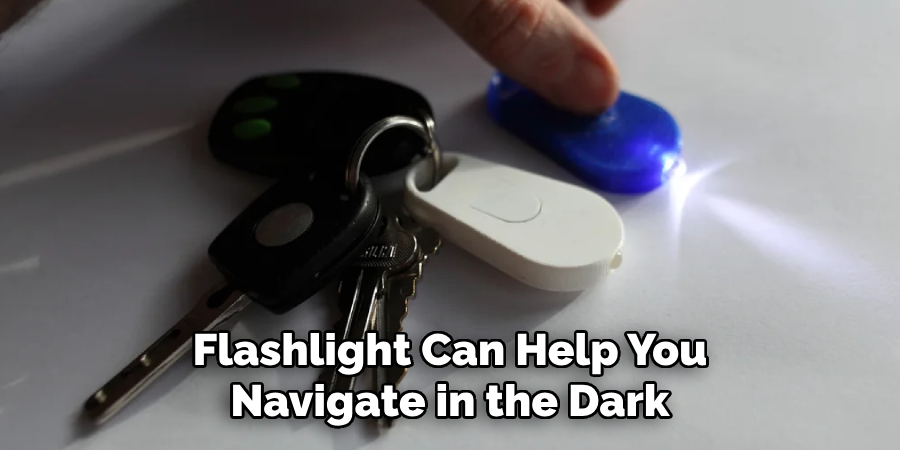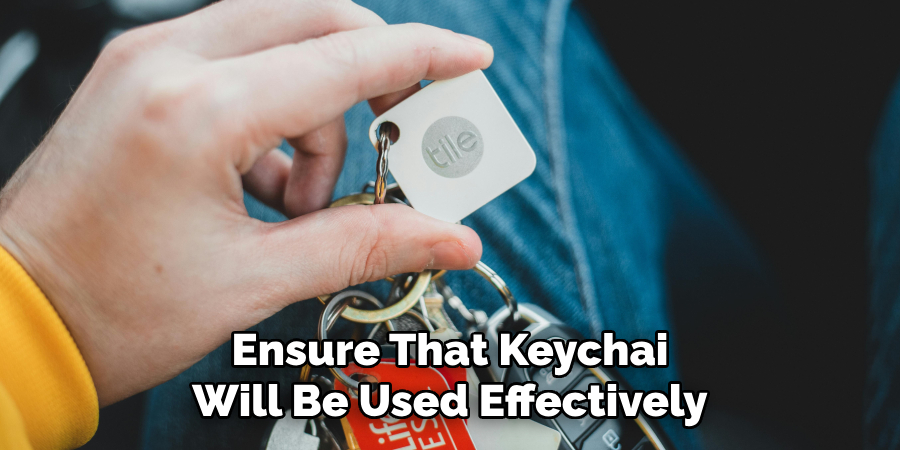Making safety keychains is a creative and practical way to enhance personal safety and preparedness.

These keychains can incorporate various safety features such as LED lights, alarms, or tools like whistles and pepper sprays, providing easy access to essential items in emergencies.
Crafting safety keychains involves selecting durable materials like paracord or strong plastics, and integrating functional components securely. Whether for personal use or as thoughtful gifts, customizing safety keychains allows individuals to tailor designs to specific needs and preferences.
By combining practicality with personal style, these keychains serve as valuable accessories that promote safety awareness and readiness in everyday life.
This guide explores creative techniques and essential tips for how to make safety keychains, empowering individuals to craft personalized and effective safety tools for themselves or their loved ones.
Importance of Safety Keychains
Safety keychains play a crucial role in enhancing personal safety and providing peace of mind.
In emergency situations, having immediate access to tools like alarms, whistles, or pepper sprays can make a significant difference in one’s ability to seek help or deter potential threats.
The compact and portable nature of safety keychains ensures that these tools are always within reach, whether attached to a set of keys, a bag, or a belt loop. Additionally, the visibility of items like LED lights can enhance safety during nighttime activities by increasing visibility and alerting others to one’s presence.
By incorporating multiple safety features into a single, easy-to-carry accessory, safety keychains empower individuals to take proactive steps in their personal safety, making them an essential addition to daily routines.
Choosing Materials for Safety Keychains
Selecting the right materials is fundamental to crafting durable and reliable safety keychains. Start by choosing a sturdy base material such as paracord, which is renowned for its strength and versatility.
Paracord can withstand significant weight and stress, making it an excellent option for keychains intended to hold multiple items. Another popular choice is high-grade plastic or metal, which provides robustness and longevity.

For functional components, consider materials that offer both resilience and practicality. For instance, LED lights with a robust casing ensure durability while providing essential illumination.
When incorporating alarms or whistles, opt for high-quality pieces that are resistant to wear and tear. Additionally, if adding pepper spray, ensure it is housed in a sturdy container with a reliable locking mechanism to prevent accidental discharge.
Customizing the appearance of the keychain can also be achieved through materials such as beads or charms, provided they do not compromise the integrity of the safety tools.
Ultimately, the chosen materials should balance aesthetics with functionality, ensuring that the safety keychain remains a practical and dependable accessory in any situation.
10 Methods How to Make Safety Keychains
1. Understand the Purpose of Safety Keychains
Before you start making safety keychains, it’s important to understand their purpose. Safety keychains are designed to provide quick access to tools that can help in emergencies or self-defense situations.
They can include items like personal alarms, pepper spray, whistle, flashlight, or even a small multi-tool. Knowing the intended use of the keychain will help you select appropriate materials and design features. Think about who will be using the keychain and what their specific needs might be.
For instance, a college student might benefit from a loud whistle and a small flashlight, while a jogger might prefer a lightweight design with a personal alarm.
2. Gather Necessary Materials
To make a safety keychain, you’ll need a variety of materials depending on the specific tools and features you want to include. Basic materials include key rings, carabiners, and durable thread or wire for attaching items.
You may also need small tools and self-defense items like pepper spray, mini flashlights, whistles, and personal alarms. Additionally, consider decorative elements like beads, charms, and colorful threads to personalize the keychain.

Having all the necessary materials on hand will streamline the creation process and ensure you don’t have to interrupt your work to gather supplies.
3. Choose a Keychain Base
Selecting a sturdy base is crucial for your safety keychain. A durable key ring or carabiner can serve as the foundation.
Key rings are versatile and easy to use, while carabiners offer added security and can clip onto belts, bags, or lanyards. Choose a base that can support the weight of the attached items without breaking or becoming cumbersome.
Ensure the base is made from strong materials like stainless steel or heavy-duty plastic to withstand daily wear and tear.
4. Incorporate Self-Defense Tools
Adding self-defense tools to your keychain enhances its functionality. Consider items like pepper spray, a personal alarm, or a kubotan. Pepper spray can deter an attacker, while a personal alarm can attract attention in an emergency.
Kubotans are small, stick-like tools that can be used for self-defense. Attach these items securely to the keychain base using durable thread or small chains.
Ensure these tools are easily accessible and can be quickly deployed in an emergency. Also, familiarize yourself with local laws regarding self-defense items, as regulations can vary.
5. Add Emergency Tools
In addition to self-defense items, emergency tools can make your safety keychain more versatile. Small flashlights, whistles, and multi-tools are excellent additions.
A flashlight can help you navigate in the dark, a whistle can signal for help, and a multi-tool can assist with minor repairs or tasks. Choose compact, lightweight versions of these tools to keep the keychain manageable.
Attach them using sturdy rings or clips, ensuring they are easily reachable and functional. Emergency tools increase the utility of the keychain, making it a valuable companion in various situations.

6. Ensure Durability and Safety
Durability is key for a safety keychain to be reliable in emergency situations. Use strong, high-quality materials for all components. Ensure that each tool and accessory is securely attached to the keychain base, reducing the risk of them falling off when needed.
Test each attachment to confirm it can withstand everyday use. Additionally, consider using quick-release mechanisms for certain items, allowing them to be easily detached when necessary.
Ensuring durability and safety enhances the effectiveness and longevity of the keychain.
7. Customize for Personalization
While functionality is critical, personalization can make your safety keychain more appealing and meaningful. Add decorative elements such as beads, charms, or colorful threads to give the keychain a unique look.
You can also incorporate initials, names, or motivational quotes to make it special for the user. Personalization not only makes the keychain visually attractive but also ensures that it is easily recognizable, reducing the chance of losing it or confusing it with someone else’s.
8. Test All Components
Before considering your safety keychain complete, it’s crucial to test all components to ensure they function as intended. Test the personal alarm to ensure it emits a loud sound, check the flashlight’s battery and brightness, and confirm that the pepper spray canister is not expired.
Practice using each self-defense tool to ensure you know how to deploy them quickly and effectively. Regularly inspect and test the keychain to ensure all components remain in good working condition. This step ensures that the keychain will be reliable in real emergency situations.
9. Package and Present Safely
If you’re making safety keychains as gifts or for sale, consider how you will package and present them. Use small, clear bags or boxes to keep all components together and protected.
Include instructions or safety information for each tool, especially for items like pepper spray, which require proper handling and understanding. Packaging should also highlight the keychain’s features and uses, making it clear to the recipient how each component can be used.
Thoughtful packaging enhances the presentation and ensures the user understands how to utilize the keychain effectively.
10. Educate and Train Users
Creating a safety keychain is only the first step; educating and training users on how to use it effectively is equally important. Provide instructions or demonstrations on how to use each tool, emphasizing safety and proper technique.

Encourage users to practice using the self-defense tools and to familiarize themselves with the emergency items. Consider offering workshops or tutorials, especially if you are distributing the keychains in a community or educational setting.
Education and training ensure that the keychain will be used effectively and safely in real-life situations.
Conclusion
In conclusion, making safety keychains involves a thoughtful combination of functionality, durability, and personalization. Start by understanding the purpose of safety keychains and gather all necessary materials.
Choose a sturdy base and incorporate self-defense and emergency tools, ensuring each item is securely attached and functional. Customize the keychain for personalization and test all components thoroughly.
Consider packaging and presenting the keychains safely, and most importantly, educate and train users on how to use them effectively. Thanks for reading, and we hope this has given you some inspiration on how to make safety keychains!
About
Safety Fic is a distinguished figure in the world of Diy design, with a decade of expertise creating innovative and sustainable Diy solutions. His professional focus lies in merging traditional craftsmanship with modern manufacturing techniques, fostering designs that are both practical and environmentally conscious. As the author of diy, Safety Fic delves into the art and science of Safety Fic-making, inspiring artisans and industry professionals alike.
Education RMIT University
(Melbourne, Australia) Associate Degree in Design (Safety Fic) Focus on sustainable design, industry-driven projects, and practical craftsmanship. Gained hands-on experience with traditional and digital manufacturing tools, such as CAD and CNC software.
Nottingham Trent University
(United Kingdom) Bachelor’s in diyfastly.com and Product Design (Honors) Specialized in product design with a focus on blending creativity with production techniques. Participated in industry projects, working with companies like John Lewis and Vitsoe to gain real-world insights.
Publications and Impact
In diy, Safety Fic his insights on indoor design processes, materials, and strategies for efficient production. His writing bridges the gap between artisan knowledge and modern industry needs, making it a must-read for both budding designers and seasoned professionals.
